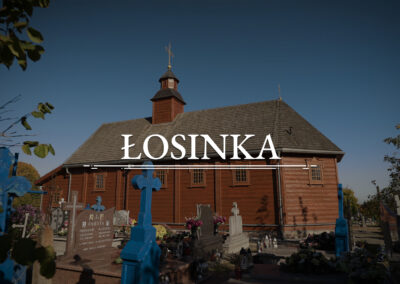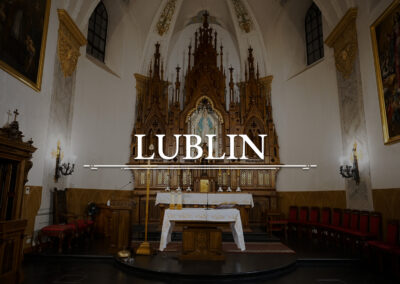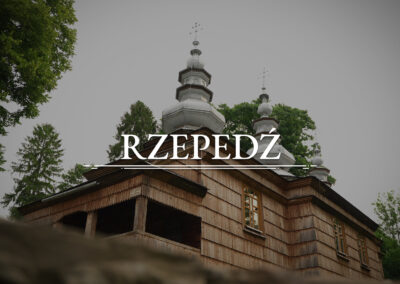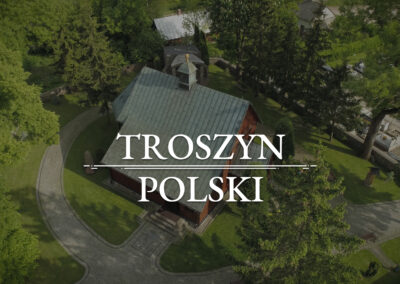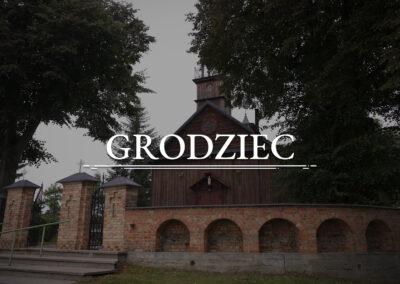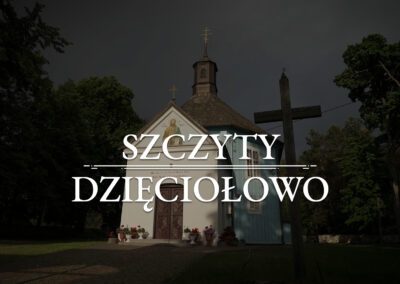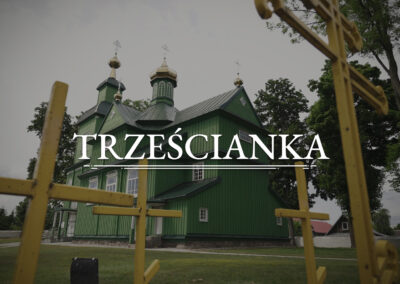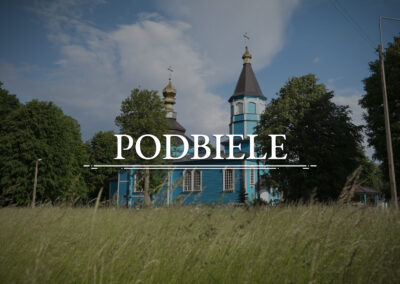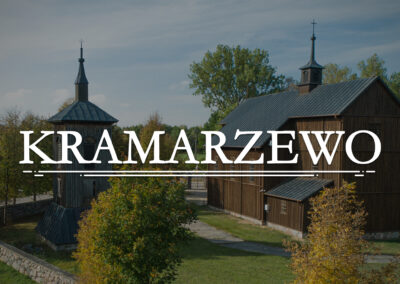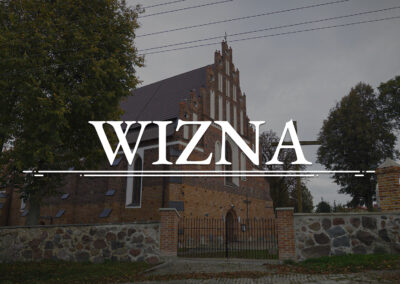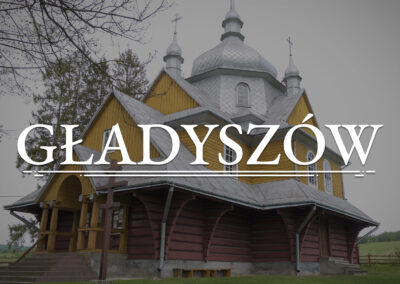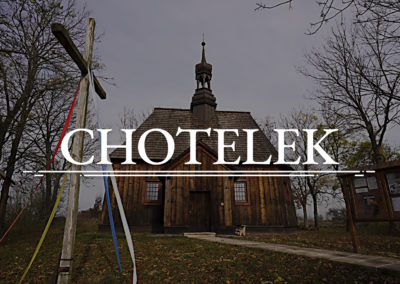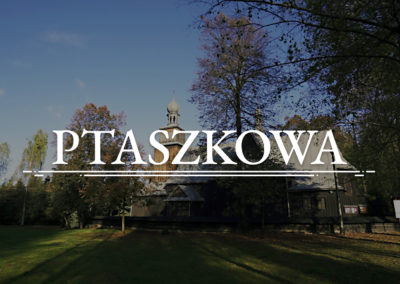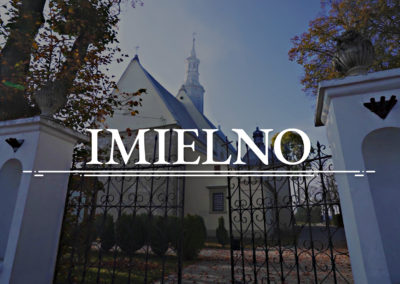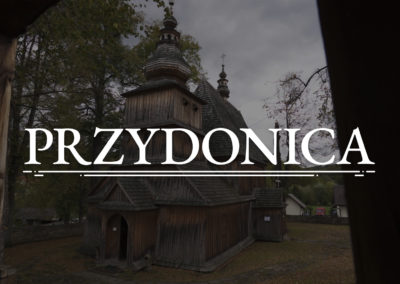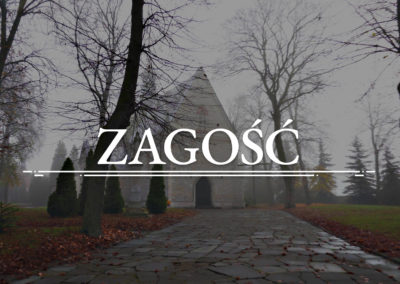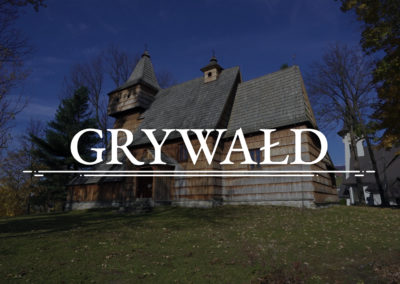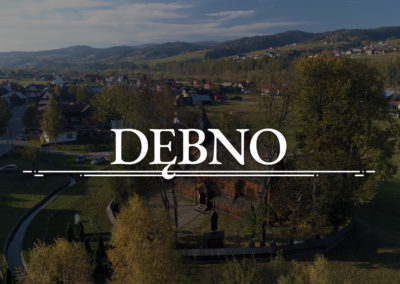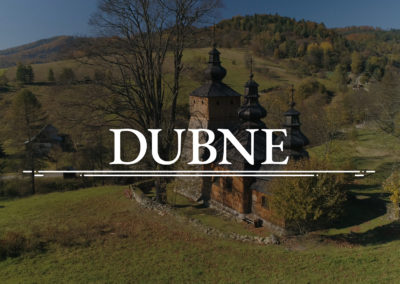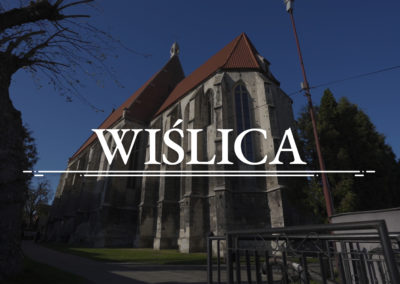ŁYSE - Church of St. Anne
This single-nave, wooden structure was designed using the Latin cross plan. The arms of the cross create chapels with a semi-hexagonal termination. The church is oriented and its facade is decorated with turrets, which are square at the base and octangular in the upper part, and are topped with helms. At the top of the sloped roof there is a square ridge turret.
CHURCH
IN ŁYSE
Although many Polish Roman Catholic and Orthodox churches remain undiscovered treasures on tourist trails, this one is very well known throughout the country. Every year, on Palm Sunday, television crews and photojournalists show up to immortalize the most beautiful Easter Palm competition in the Kurpie region. The winners can win significant financial prizes and the competition is supported by esteemed institutions under the leadership of the Ministry of Culture and National Heritage. However, what matters for us most is the stage where this competition is held: the church of St. Anne in Łyse.
This single-nave, wooden structure was designed using the Latin cross plan. The arms of the cross create chapels with a semi-hexagonal termination. The church is oriented and its facade is decorated with turrets, which are square at the base and octangular in the upper part, and are topped with helms. At the top of the sloped roof there is a square ridge turret.
When visiting, we may be at first discouraged by its closed gate. The key to it is in possession of the person who is taking care of the church, whom you can ask about interesting facts concerning the history of this place. The church was built in the years 1876-1886 and the local carpenters, who worked on the construction, made sure that next to characteristic Catholic ornaments there would also be some patterns from the local tradition. This is why the design of this place is sometimes referred to as the Kurpie region Baroque.
Inside the church, the wooden interior decoration creates the climate of calm that is conducive to contemplation and helps soothe frazzled nerves. Rich in ornaments polychromies dating from the 19th century have been preserved until today. It is also worth paying attention to the four altars. The main one is decorated with the painting of Our Lady of Czestochowa and Christ the King. The latter was painted in the 1950s by Father Czesław Łapiński after his return from Siberia. The next interesting painting is the one of St. Anne from 1789. There are also paintings executed by Father Antoni Wężyk, who was the parish priest in the years 1938-50. Their titles are “Blessing of the Kurpie” and “the Assumption of Mary into Heaven”. It is worth having a closer look at the paintings, ornaments and sculptures in the church to find references to the culture and art of the Kurpie. One of the paintings represents two women exchanging greetings. This is Maria and Magdalene having behind them a Kurpie style hut. Another one represents a man helping Jesus carry the cross, the man is wearing a Kurpie costume
After visiting the inside of the church, we recommend going for a walk in the neighbourhood. The nearby Stations of the Rosary constitute an example of the Kurpie art. They were carved by Józef Bacławski. Nearby you will also see the figure of a scytheman from Kurpie in remembrance of the January Uprising and an old cross from 1863 erected in memory of this event.
Sources:
ŁYSE - Church of St. Anne

COFUNDED BY THE MINISTER OF CULTURE AND NATIONAL HERITAGE
ORIGINATING FROM CULTURE PROMOTION FUND



